![]() So! You’re a poor and starving artist who really needs to frame his or her
So! You’re a poor and starving artist who really needs to frame his or her  work. It doesn’t matter whether it’s for your first exhibition or for a customer, or just to sell it, you just need you art in a frame. You’ve been selling sell your work as it is, unframed, with zero presentation effort . Alas, you’ve since discovered the harsh truth that art won’t frame itself and it’s harder to sell it unframed or without a picture frame. If it’s just on a piece of paper, it’ll look pretty unappealing, no matter whichever masterpiece it’ll purport to display. You’ve also been around the traps long enough to know...
work. It doesn’t matter whether it’s for your first exhibition or for a customer, or just to sell it, you just need you art in a frame. You’ve been selling sell your work as it is, unframed, with zero presentation effort . Alas, you’ve since discovered the harsh truth that art won’t frame itself and it’s harder to sell it unframed or without a picture frame. If it’s just on a piece of paper, it’ll look pretty unappealing, no matter whichever masterpiece it’ll purport to display. You’ve also been around the traps long enough to know...
you don’t like being a starving artist. But you're going hungry because you sell your art on loose sheets of paper which non-cognoscenti perceive of little, or of whimsical value. So stop doing what you’ve been doing all this time and listen to your friends and fellow artists who keep telling you that you’re selling your art too cheap!
Rest assured that by picture framing your art you are increasing the chances of receiving the best offer for your drawings, watercolours, gouaches, charcoals, pastels, acrylic or paintings, or whichever art is to be framed.
Now that you’ve decided on that course of action the next decision to take is, how will you frame your at? Broadly, then, there are two main methods as to how achieve this, the first is custom picture framing, the second is D.Y.0. picture framing. We will not dwell too long on the first method, because, it’s just too expensive for a starving artist like yourself.
Sure, custom picture framing is “better” than DYO framing, but the adherence to Picture Frames and Picture Framing Standards can cost 10 times or more than the humbler option. This cost differentiation is quite normal and it is, in the main, due to higher costs and wages here in Australia when compared to Asian manufacturing nations.
This is quite an interesting topic which we researched and published as the post ”Made in Australia? Are you kidding?” Be that as it may, we will now delve deeper into DYO framing.
To illustrate this better let’s imagine a common format the A2 to A3 matted ( meaning with a window mat) picture frame, or poster frame, shown below.
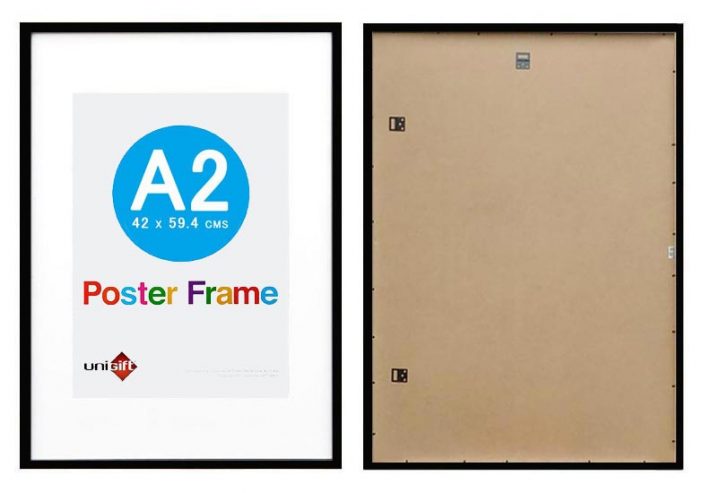
Note that the frame is black and the mat colour, white. This arrangement is not only the simplest, but also most common, the cheapest, and the top selling one. Also remember that a custom picture framing consultation can be can quite time-consuming, and simple framing is often the best, since you would not want your work over-framed and distracting away from you’re the art.
Yet another factor is that a complicated framing or convoluted matting may please your eye, but not your potential Customer’s, so why heighten the risk and cost of rejection? It can be quite disheartening to a starving artist hear a potential buyers' ambiguous or qualified approvals such as “I love the watercolour, but hate the frame, can you change it?”
What sometimes happens in these situation is that the buyer can force the seller’s hand and knock off or discount the sale price a few hundred dollars, ostensibly to ‘compensate” for the “wrong” picture frame”.
This is why when considering how to frame your art cheaply, it will be prudent to do away with fancy, ornate, exotic or stacked frames, fillets, pastel mats, specialty, or multiple mounts.
The reason is simple, cost. Remember that we are trying to keep your art cheap for you and affordable for your Customers. As an instance, and at the time of writing, the off-the-shelf, ready-made and Do Your Own fitting combination shown above costs $36.70.
The same combination, either as a custom picture frame, acid-free picture frame, archival, or museum framing can cost upwards of a couple of hundred dollars, depending where you go. If you disbelieve these figures we invite you to ring up picture framers near you and ask for picture framing quotes, you will be surprised!
Now, and as indicated before, most framing other than DYO tends to cost more, because of higher labour and better material costs.
On the other hand, off-the shelf- frames are cheaper also because these tend to have inferior materials. The two most important components are the back of the frame, or the backing, and the window mat.
These are important because these are the two principal components which will touch, hold and “sandwich in” the artwork being framed.
With regard to the first component, the backing, this is generally an inferior material, and not suitable for fine art framing or to frame originals. The reason for this is that mass-produced frames nearly always include backings cut from Medium Density Fibreboard (MDF) which is highly acidic.
The acid contained in backings, or any other component for that matter, can migrate and transfer to the art with highly deleterious effects.
These effects are, in the main, the embrittlement of the art and is discolouration to a yellowish colour. Both of these adverse effect are more fully addressed in the post: “Is there an anti-yellowing, "safe" picture frame ?” There is, however, an easy fix to this, and it needn’t cost a lot of money. All you need to do is line the backing with an acid-free piece of matboard.
This can be an off-cut, easily and cheaply purchased from most picture framing workshops for a couple of dollars, or so. With regard to the second component, there should not be a great deal of worry. Nowadays, even the cheapest, imported production matboards are buffered with additives such as calcium carbonate which makes matboards’ pH acid free.
Again, while this may not be the very best picture framing arrangement, it is the best value-for-money, especially for a starving artist, since it attains the minimum acid-free standard practised by most commercial picture framers.
It is up you the artist to an objective judgement, but not solely as an artist, also as business person who is trying to make not just a sale, but a good sale. Let’s say you hoped to sell your drawing, sketch or watercolour for $500, which is quite an affordable price for most art clients.
But you need to frame it, to increase you selling chances. Remember, you've had enough at being a starving artist. To get a custom frame takes time, effort and money. Also, if you listen to some picture framers, your custom frame needs to be museum-quality with Ultra Violet filtering glass, rag mats and the works.
And to be sure that’s the best framing possible, but if the la-di-dah custom frame costs you another $500, then your framed art is starting to cost a 4-figure sum of $1,000, or more, which will make many clients think twice, or more.
In our opinion, the more affordable art is, the more artists will sell, and an A2 print matted to A3 for around $550 will sell far more readily than if it’s a grand or more.
Therefore, a $30 or $40 dollars acid-free ready-made frame with a modified acid-free backing, is good value for money to any starving artist. Yet there are some artists unduly criticize off-the-shelf, read-made frames as cheap and nasty.
While this might have been true 20 or 10 years ago, the finish and standards of these inexpensive frames have improved considerably over the last decade or so. In the main there were always two main criticisms of ready-made frames, the first was of the glass quality, and the second one was of the frame finish and joints workmanship.
Concerning the glass, in the past, the glazing of these frames was sometimes questionable in so far that it was the cheaper sheet or drawn glass, rather than float glass, which is slightly more expensive, but of much better quality.
For those not in the know, the main problems with sheet glass are distortion, impurities, flaws and frequently seeds, a shown below:
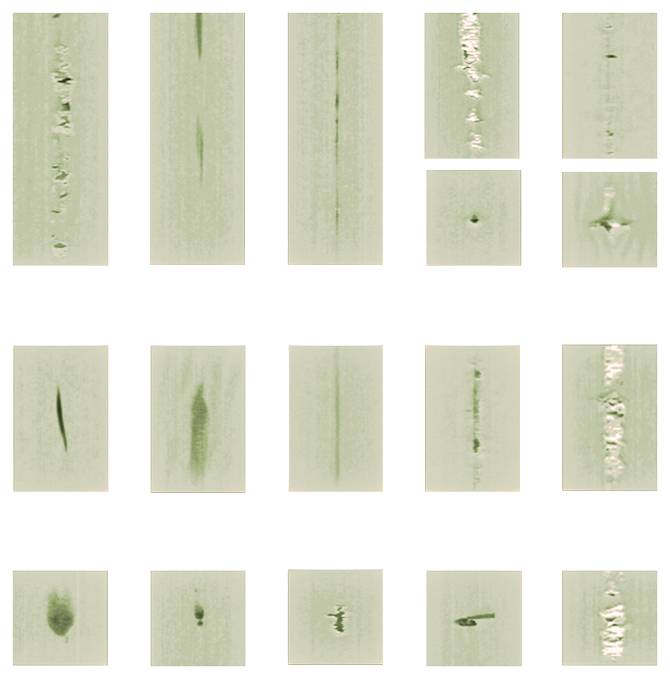
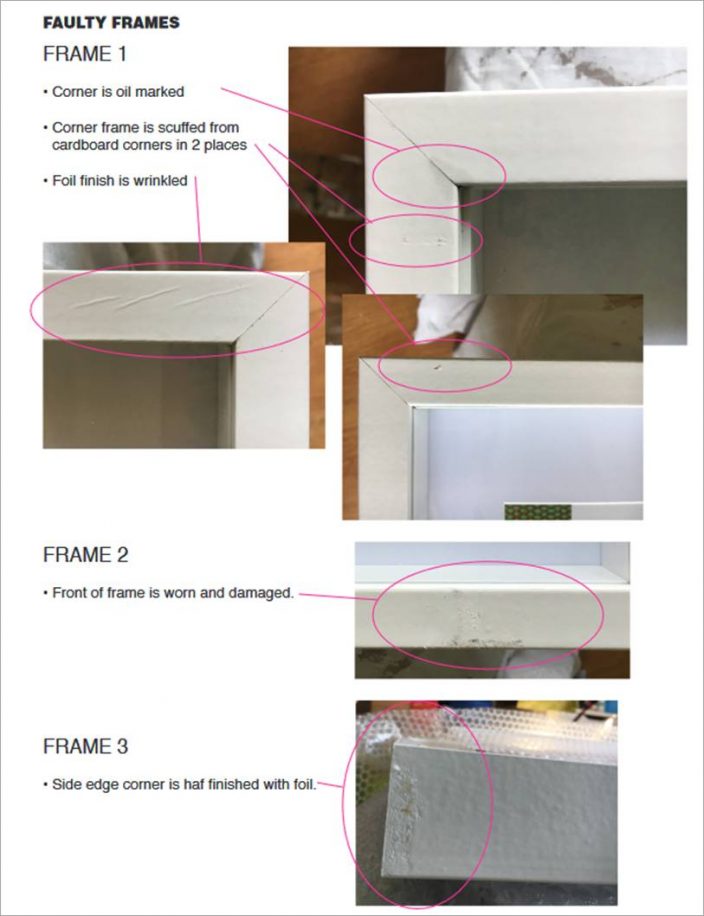
And while the above defects have largely disappeared from latter day ready-made frames, it is important to note that these are still mass-produced products for a good, but now flawless appearance. This is important because occasionally there are Customers who expect too much from these excellent, value-for-money, picture frames and poster frames and who are occasionally disappointed.
We emphasize that most off-the-shelf frames, such as the ones we sell, are of very good house-ware quality but are not in the same class such as hand-made, custom picture frames.
Once more, this is reflected in the price which can be up to 80% cheaper of an equivalent, Australian-made, hand built, custom frame. Again, the choice and price of commensurate quality rests with the Customer, and not the retailer.
This post "What's the main difference between “Custom-Made and Ready-Made picture frames?” May be useful in comparing the advantages and disadvantages of these two classes of picture frames.
As an ending note, and on the subject of artists travailing in the pursuance of their art, the following blog is relevant and may be of interest “Artists’ Regrets, Mistakes and Failures of Times Past”. Thank you for reading this post "The starving artist’s guide to picture framing".







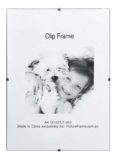
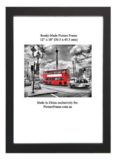
Goodness, what can I say except that most of what’s posted here is -unfortunately- bloody well true? I can work for days, if not weeks, doing and redoing same of my compositions, watercolours, pastels, etc., only for some moron client to try to screw me down on price like it’s a freebie or give-away or something. Most, if not all, of the clients I sell to do not have the brains to value or appreciate that they are buying unique and irreplaceable art. All they want is a cheaper price, sometimes less than half of what I’m asking for. I certainly won’t give up my day job for my art, I’d probably starve or be homeless. Clients are sooo mean !!!